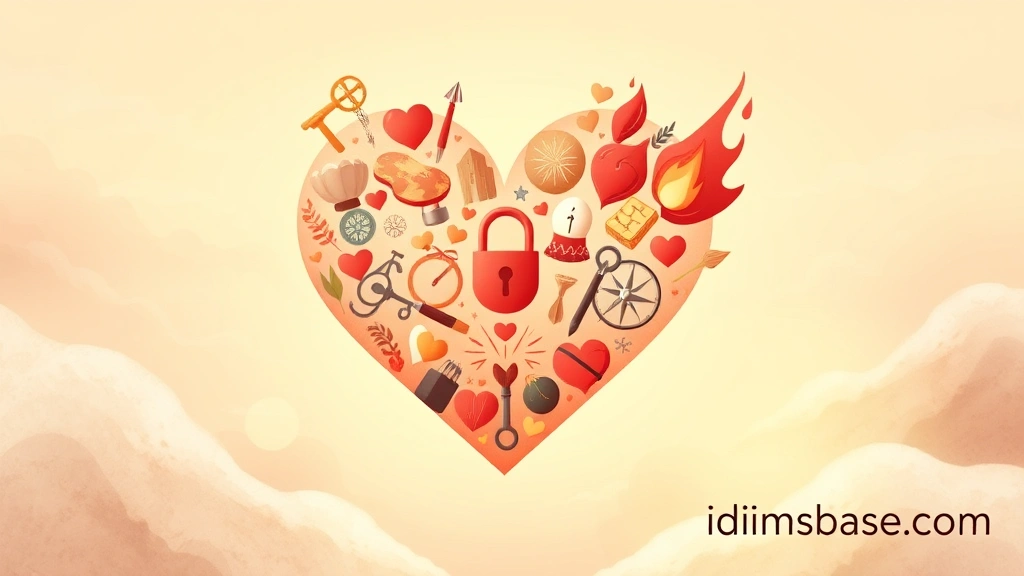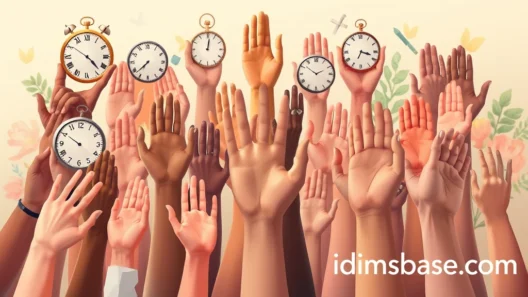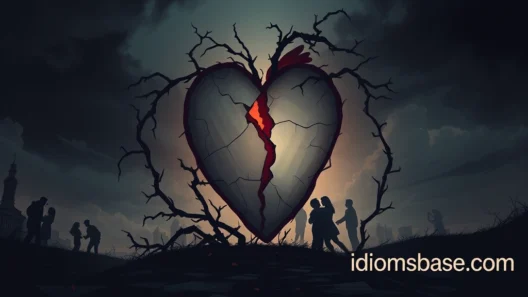Welcome, dear reader, to a fascinating journey into the very core of what makes us human: the heart! It's more than just a muscle pumping blood; it's a symbol, a feeling, a wellspring of emotions, and a concept so rich that language struggles to contain it. That's where metaphors come in! They help us paint vivid pictures and understand complex ideas by comparing them to something simpler or more familiar.
Think about it: how often do we talk about our "heart" in ways that have nothing to do with its biological function? We say someone has a "heart of gold" or a "broken heart." These aren't literal statements, are they? They’re beautiful, powerful metaphors that help us describe the intangible. Join us as we explore 38 incredible metaphors for the heart, each one opening a new window into its multifaceted nature. Get ready to expand your understanding and perhaps even find a new way to express your own feelings!
Unveiling the Emotional Core: Metaphors for the Heart
The heart, in literature and everyday language, often represents our deepest emotions, our true selves, and our capacity for connection. These metaphors capture that essence beautifully.
The Heart as a Container of Feelings
Our hearts are often seen as vessels holding a vast array of emotions, sometimes overflowing, sometimes hidden.
- A wellspring of emotion: Imagine a natural spring, constantly bubbling up with fresh water. That's your heart, a source from which emotions like joy, sorrow, love, and anger continuously flow. It’s where feelings originate and emerge.
- A fortress of feelings: Sometimes, our hearts act like a strong, protective castle, guarding our inner thoughts and vulnerabilities. It suggests a desire to keep emotions private or safe from harm.
- A fragile vase: This metaphor highlights the delicacy of the heart, especially when it comes to love or pain. Just like a vase, it can be beautiful but easily shattered by harsh words or actions.
- A bottomless pit of despair: When someone is deeply sad, their heart can feel like an endless void, consuming all happiness. It conveys profound and overwhelming sorrow.
- A treasure chest of love: This evokes the idea that the heart holds precious, invaluable love, cherished and protected. It's a place where affection is stored and kept safe.
- A battlefield of emotions: Have you ever felt conflicted? Your heart can be a place where opposing feelings, like love and hate, or hope and fear, clash and struggle for dominance.
- A tangled knot of worries: When anxiety takes hold, the heart can feel like a complex, intertwined mess, difficult to unravel. It suggests confusion and distress.
- A roaring fire of passion: This metaphor speaks to intense, burning emotion, be it love, anger, or ambition. It’s a powerful, all-consuming feeling.
The Heart as a Symbol of Character and Essence
Beyond emotions, the heart often stands for who we truly are—our character, our courage, our very soul.
- A moral compass: Just as a compass guides a ship, your heart can guide your decisions, pointing you towards what is right and true. It represents your innate sense of ethics.
- The core of one’s being: This metaphor emphasizes the heart as the absolute center of a person's identity, their true self, and their fundamental nature.
- A guiding light: In times of darkness or uncertainty, the heart can be a source of hope and direction, illuminating the path forward. It suggests inner wisdom.
- A sturdy oak tree: This speaks to resilience and strength. A heart like an oak can withstand storms and remain steadfast, symbolizing unwavering determination.
- A blank slate: When someone is young or naive, their heart might be seen as pure and untainted, ready to be written upon by experiences. It suggests innocence and potential.
- A mirror of the soul: This beautiful metaphor suggests that your heart reflects your true inner self, revealing your character and intentions to the world.
- A well-oiled machine: For someone who is highly efficient and perhaps less emotional, their heart might be described as precise and functional, working without fuss.
- The engine of life: This highlights the heart's vital role, not just biologically, but as the driving force behind one's actions, passions, and existence.
The Heart in Action: Metaphors for Its Role and Impact
The heart isn't just passive; it drives us, connects us, and influences our interactions with the world.
The Heart as a Source of Connection and Love

Love, empathy, and connection often stem from the heart, making it a powerful bridge between people.
- A bridge to others: Your heart can connect you to other people, fostering understanding and empathy. It helps you cross the divide between individuals.
- A warm embrace: This evokes comfort, safety, and a feeling of being loved and accepted. It’s a gentle, nurturing metaphor.
- A magnet for love: When you give love, your heart attracts it back, drawing people and positive experiences towards you. It suggests a reciprocal flow of affection.
- A fertile ground for compassion: Just as seeds grow in fertile soil, compassion and kindness can flourish and expand within a nurturing heart.
- A beating drum of life: This emphasizes the rhythmic, life-giving pulse of the heart, symbolizing vitality and the rhythm of existence shared with others.
- A soft pillow: When you seek comfort and solace, a kind heart can offer a gentle, supportive place to rest your emotional burdens.
- A beacon of hope: In times of despair, a courageous or loving heart can shine brightly, guiding others towards optimism and better times.
- A shared melody: When two hearts are in sync, they create a harmonious tune, symbolizing deep understanding and emotional resonance between people.
The Heart Facing Challenges and Change
Life isn't always smooth, and our hearts often bear the brunt of difficult experiences, leading to growth or pain.
- A broken mirror: When a heart is shattered by grief or betrayal, it can feel fragmented and unable to reflect clearly, showing deep emotional damage.
- A heavy stone: Grief or sorrow can make the heart feel incredibly burdensome and difficult to lift, symbolizing profound sadness.
- A dark abyss: This evokes a sense of emptiness, hopelessness, and overwhelming despair, a place where light struggles to penetrate.
- A wounded bird: This suggests vulnerability, pain, and a struggle to fly freely after being hurt. It conveys fragility and suffering.
- A locked door: Sometimes, a heart might close itself off due to past pain, preventing new connections or emotions from entering. It implies self-protection.
- A melting pot: Experiences, both good and bad, can blend and transform the heart, shaping its character over time. It suggests adaptation and change.
- A burning ember: Even after great pain, a small spark of hope or resilience can remain, ready to be rekindled. It signifies enduring spirit.
- A hardened shell: Repeated disappointments can cause a heart to build protective layers, making it less receptive to emotions or new experiences.
Poetic and Evocative Metaphors for the Heart
Some metaphors are particularly vivid, painting a picture that resonates deeply with our understanding of the heart's complex nature.

- A delicate flower: Like a blossom, the heart can be beautiful, vibrant, and full of life, but also susceptible to wilting under harsh conditions.
- A silent symphony: Even without words, the heart can express a vast range of emotions, like a complex musical piece played within.
- The inner sanctum: This denotes the heart as a sacred, private, and deeply spiritual space within a person, where truth and wisdom reside.
- A canvas of experience: Every joy, sorrow, and encounter leaves an impression on the heart, creating a unique masterpiece of life's journey.
- A hidden garden: Your heart can be a private, beautiful space where your true desires, dreams, and deepest feelings grow and flourish, unseen by others.
- A wild ocean: Like the sea, the heart can be vast, unpredictable, calm, or stormy, reflecting the immense depths and changing tides of human emotion.
Key Takeaways
- Metaphors for the heart help us understand its complex roles beyond a biological function.
- They describe the heart as a container of emotions, a symbol of character, and an active force in our lives.
- These vivid comparisons allow us to express deep feelings and abstract concepts in relatable ways.
- From a "wellspring of emotion" to a "wild ocean," each metaphor offers a unique perspective on the heart's multifaceted nature.
- Using these metaphors can enrich your language and help you communicate more effectively about feelings and character.
Frequently Asked Questions
H3. What is a metaphor?
A metaphor is a figure of speech that directly compares two unlike things without using "like" or "as." It states that one thing is another thing, to create a more vivid or imaginative description. For example, saying "her smile was sunshine" uses a metaphor to suggest her smile brought warmth and happiness.
H3. Why do we use metaphors for the heart?

We use metaphors for the heart because the heart represents so much more than just a physical organ. It symbolizes our emotions, character, courage, love, and core being. Metaphors allow us to express these abstract and complex ideas in a more tangible, relatable, and poetic way, making our language richer and more evocative.
H3. How can using these metaphors improve my communication?
Using metaphors can significantly improve your communication by making your language more engaging, memorable, and vivid. They help listeners or readers visualize what you're describing and grasp complex emotions or ideas more easily. For example, saying "my heart felt like a heavy stone" conveys sorrow much more powerfully than just "I was sad."
H3. Are there cultural differences in heart metaphors?
Absolutely! While the heart is a universal symbol, the specific metaphors and their connotations can vary significantly across cultures. For instance, in some cultures, the liver or stomach might be seen as the seat of emotions, or certain animals might be used to represent courage or love. However, the concept of the heart as an emotional or spiritual center is widespread.
H3. Can metaphors for the heart be negative?
Yes, metaphors for the heart can certainly be negative. While many describe positive attributes like love and courage, others convey pain, sorrow, fear, or harshness. Examples include "a broken mirror," "a dark abyss," or "a hardened shell," which all describe negative emotional states or character traits associated with the heart.
H3. How can I create my own metaphors for the heart?
To create your own metaphors, think about the specific feeling or quality of the heart you want to describe. Then, brainstorm objects, natural phenomena, or concepts that share a similar characteristic. For example, if you want to describe a generous heart, you might think of a "flowing river" or a "giving tree." The key is to find unexpected but fitting comparisons.
H3. What is the difference between a metaphor and a simile?
The main difference lies in the comparison. A metaphor directly states that one thing is another (e.g., "Her heart is a fortress"). A simile compares two things using "like" or "as" (e.g., "Her heart is like a fortress"). Both are figures of speech that draw comparisons, but metaphors are generally more direct and impactful.
We hope you've enjoyed this exploration of the heart's many metaphorical faces! Language is a powerful tool, and by understanding and using these vivid comparisons, you can express the depth of human emotion and character with greater precision and beauty. So, go forth and let your words, like your heart, beat with passion and creativity!






